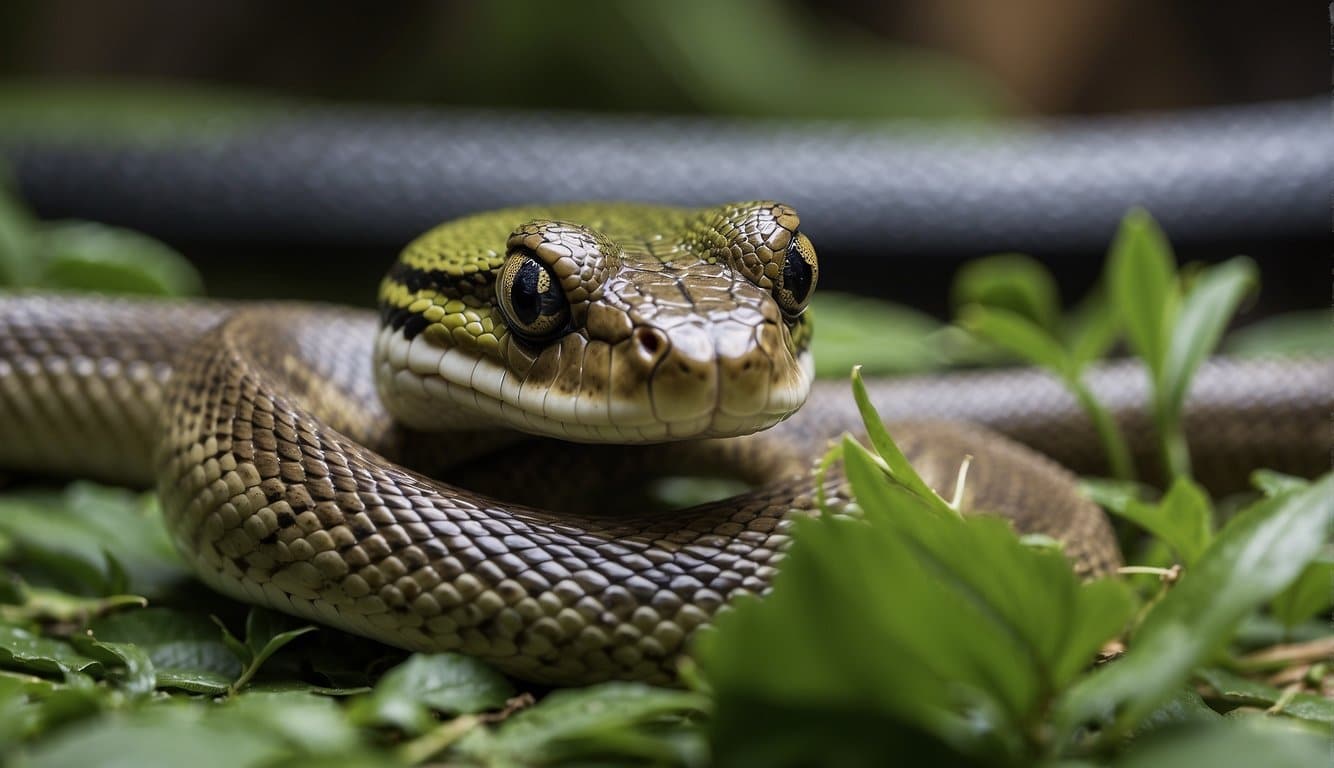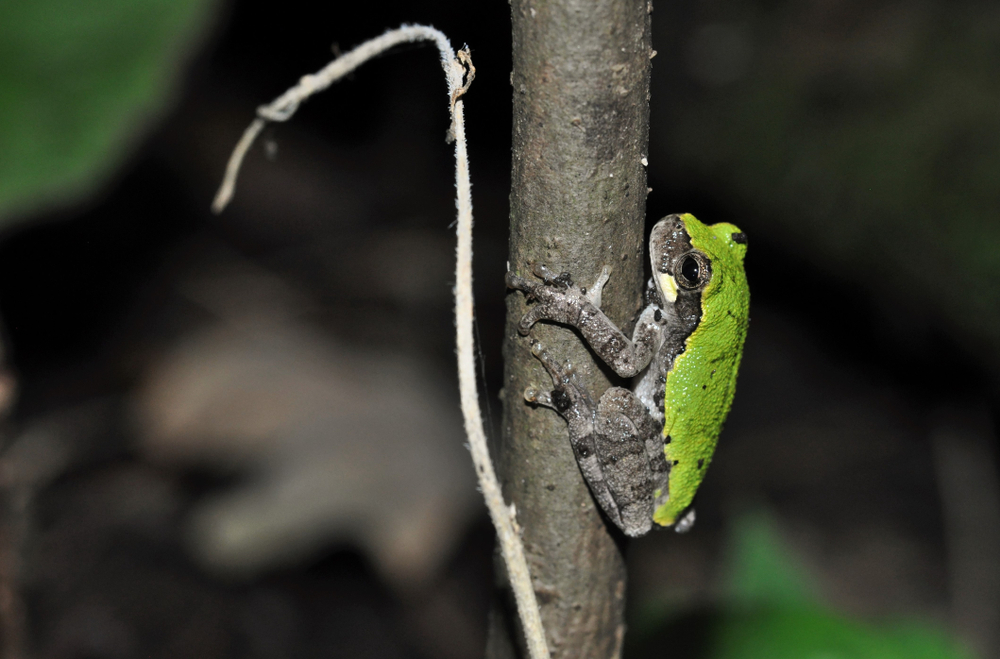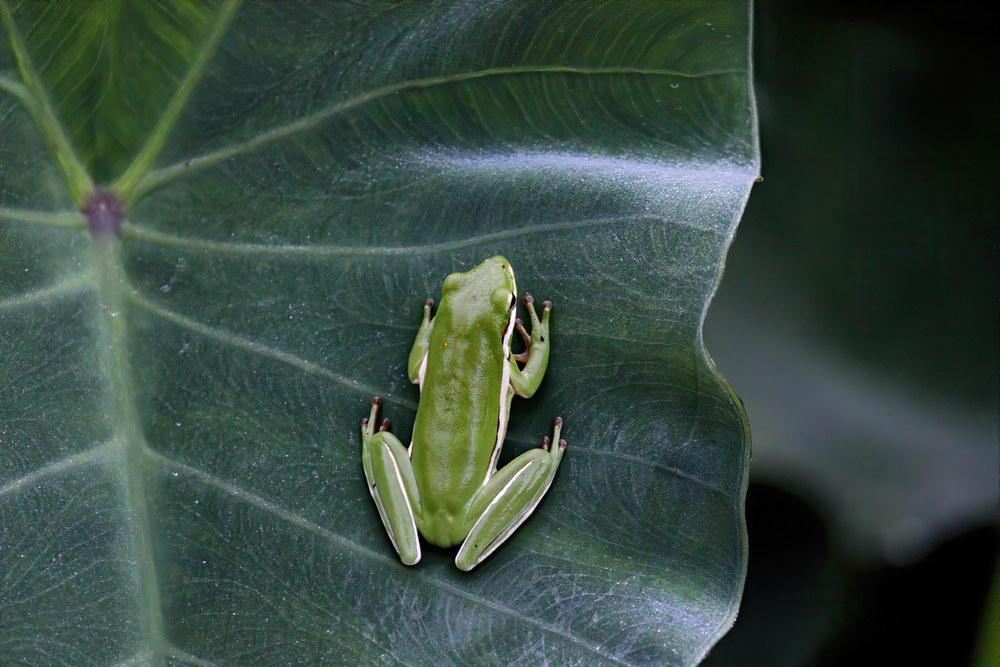Quick Answer:
Yes, many snake species do eat frogs as part of their natural diet. Here’s a table summarizing this dietary habit:
| Question | Do Snakes Eat Frogs? |
|---|---|
| Answer | Yes, All the Time |
| More Info | Many snake species around the world, both venomous and non-venomous, include frogs in their diet. Here are key points: |
- Diet Preferences: Snakes that live near water sources, such as ponds, marshes, and lakes, often prey on frogs as a primary food source. Frogs are easier to catch and swallow for many smaller or medium-sized snakes.
- Hunting Methods: Some snakes are adapted to aquatic environments, making them efficient at catching frogs in or near water. Others may ambush frogs on land.
- Examples of Snake Species: Water snakes, garter snakes, and pit vipers are examples of snakes that regularly eat frogs. These snakes have developed hunting strategies that suit the habitats where frogs are likely to be found.
Overall, frogs constitute a significant part of the diet for various snake species, providing them with essential nutrients needed for their survival.
Overview of Snake Diet
Snakes exhibit a highly diverse range of feeding behaviors. Your familiarity with their dietary choices, specifically regarding frogs, can be quite enlightening.
Dietary Habits
- Opportunistic Feeding: Many snakes don’t strictly limit their diet to a single prey type. They consume a wide variety of animals, including amphibians, small mammals, birds, and fish depending on their ecological niche and physical capabilities.
- Feeding Frequency: Depending on species and the size of their prey, some might eat once a week while others could go weeks or even months between meals.
Prey Preferences
- Amphibian Affinity: Snakes from the Colubridae family often prefer frogs due to their abundance in shared habitats.
- Specialized Hunters: Certain species, like water snakes, are known to specialize in eating frogs and tadpoles, capitalizing on their aquatic surroundings where these amphibians thrive.
Frogs as Prey
Frogs are a significant part of the diet for many snake species, providing both nutritional value and a challenge in hunting.
Frog Species Targeted
- Northern Water Snakes: These snakes have a particular taste for amphibians found near bodies of water, often targeting frogs as part of their varied diet. Frogs along with tadpoles, fish, and other small creatures make up their meals. Frogs are an important prey item, especially during the breeding season when they are abundant near water.
- Other Snake Species:
- Some snakes specialize in hunting toxic species, such as the poison dart frog, despite the frog’s potent defenses.
- Not all snakes will pursue frogs; some larger constrictors prefer larger prey and do not commonly consume amphibians unless other food sources are scarce.
Nutritional Value for Snakes
- Protein Source: Frogs are a high-protein meal for snakes, which is essential for their growth and development.
- Energy Metabolism: The fat and other nutrients found in frogs provide snakes with the necessary energy for daily activities and physiological functions.
Specific Nutrients
- Snakes metabolizing frog prey benefit from calcium and other minerals found within these amphibians, aiding in bone development and overall health.
- By preying on frogs, snakes intake a variety of vitamins, sustaining their immune systems and reducing the risk of diseases.
How Snakes Hunt Frogs
In the diverse world of snakes, hunting methods are specialized according to the species and their environment.
Stalking Technique
Some snakes opt for stealth, while others employ powerful constriction techniques to subdue their prey.
- Stealth: Snakes are masters of camouflage, often blending seamlessly with their surroundings to sneak up on unsuspecting frogs.
- Sensory Detection: They use their heightened senses, such as thermal detection and vibration sensitivity, to track frog movement.
Striking and Constriction
After stalking, some snakes swiftly strike their prey, and depending on the species, they may then enact constriction.
- Sudden Attack: The snake will lunge and strike at lightning speed, often surprising the frog.
- Constriction: For those that constrict, this is how they secure their meal:
- Wrapping their bodies coiled around the prey
- Executing a suffocating grip until the frog ceases moving
Ecological Impact
When you look at the natural world, snakes and frogs are closely interconnected. Your understanding of the broader ecological ramifications of this relationship is vital for appreciating nature’s balance.
Predator-Prey Dynamics
- Snakes play a crucial role in the predator-prey dynamics within an ecosystem. When snakes suffer due to a decrease in frog populations, this can disrupt the food chain. A precipitous decline in amphibians can lead to a corresponding decline in the snake species that feed on them.
- This dynamic is evident in cases where amphibian populations are decimated by disease, such as the chytrid fungus, and snake populations subsequently decline. The intricate web of life means that the loss of one species can have a cascading effect on others.
Frog Population Control
- Frogs constitute a significant part of many snake species’ diets. By preying on frogs, snakes help to maintain a balance in amphibian populations, preventing overpopulation and the potential for resource depletion.
- Amphibians, owing to their reproductive strategies, can reproduce in large numbers. Snakes help to regulate these numbers, which in turn supports the overall health of wetland ecosystems. When frog numbers are unchecked due to a reduction in their predators, it can lead to imbalances that affect a variety of other species and plant life.
Conservation Considerations
When considering the conservation of ecosystems, it’s crucial to understand the role snakes play in the food web, particularly their interaction with frog populations. Your awareness and actions can contribute to maintaining this balance.
Habitat Preservation
- Maintain Wetlands: The preservation of wetlands is vital as many snakes, including those that feed on frogs, rely on these areas for hunting and living. If wetlands are destroyed or polluted, both frog and snake populations can decline. Ensure any activities near these habitats are regulated to minimize impact.
- Forest Protection: Snakes also inhabit forested areas where frogs may reside. Protecting these areas from deforestation and fragmentation can help sustain their populations. Support local and national parks which work to conserve these environments.
Impact of Invasive Species
- Monitor Exotic Pets: Avoid the release of non-native species, which may become invasive. Introduced predators like some snake species can devastate native frog populations. Before getting an exotic pet snake, ensure you’re capable of a long-term commitment.
- Support Control Programs: Participate in programs designed to control invasive species in your local area. Removal efforts of non-native snakes can help to restore the ecological balance and give native frog species a better chance of survival.
Frequently Asked Questions
In this section, we uncover the specifics of a snake’s diet with a focus on their consumption of frogs and other amphibians, and explore the dynamic between their feeding habits and prey availability.
What types of prey are included in a snake’s diet?
- Snakes are carnivores with a varied diet that typically includes rodents, insects, eggs, and amphibians. The specific prey they consume depends on their species, size, and habitat.
- Dietary preference is influenced by the snake’s physical capabilities, such as the presence of venom or constriction techniques, as well as the availability of prey within their ecosystem.
Are certain snake species prone to eating amphibians like frogs?
- Yes, some snake species are more inclined to eat amphibians, including frogs, particularly those belonging to the Colubridae family, which are often found in habitats shared with frog populations.
- Water-associated species, such as water snakes, frequently consume frogs due to their proximity to aquatic environments where frogs are abundant.
Is it common for snakes to consume both toads and frogs?
- Consumption of both toads and frogs is common among snakes that are opportunistic feeders, especially those living in or near aquatic habitats.
- Certain snakes have evolved to handle toads’ defense mechanisms, such as toxic secretions, allowing them to safely include both toads and frogs in their diet.
How does the presence of frogs affect snake behavior and feeding habits?
- Snakes may demonstrate increased activity in regions with high frog populations, especially during breeding seasons when frogs are more visible and plentiful.
- The abundance of frogs can lead snakes to adapt their hunting strategies, timing, and preferred habitats to optimize their feeding opportunities.
What factors determine whether a snake will prey on birds or other small mammals?
- Factors include the size and strength of the snake, the availability of suitable prey, and the snake’s anatomical adaptations, such as the ability to climb trees for birds or dig for burrowing mammals.
- For example, larger constrictor snakes may prey on birds and mammals since their size allows them to tackle and overpower these animals effectively.
Do predatory birds and snakes compete for similar food sources such as frogs?
- There is potential for competition between predatory birds and snakes in ecosystems where their diets overlap significantly, including the consumption of frogs and other amphibians.
- Both predators might adjust their hunting times or target different age groups or species of frogs to reduce direct competition.
Last update on 2025-04-18 / Affiliate links / Images from Amazon Product Advertising API





